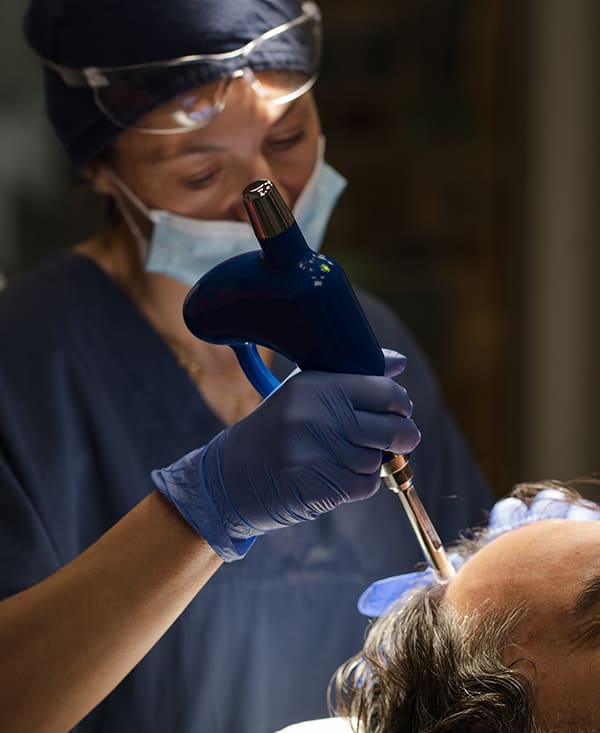At Image Regenerative Clinic, our hair transplant method for treating alopecia, baldness, or significant hair loss is derived from reconstructive surgery. Initially developed for burn patients, this technique preserves over 80% of donor follicular units, and the same donor area can be utilized for future hair transplants.
We discuss this with Professor Carlo Tremolada, Scientific Director of Image Regenerative Clinic.
Characteristics: Utilizing the Regenerative Capacity of Hair Follicles
The innovative aspect of our technique lies in the follicle extraction method, which promotes the natural regenerative capacity of cells in each transplanted hair follicle. The procedure involves extracting hair follicles from the occipital region (nape area) using a 0.6-millimeter microblade. This extraction technique facilitates new hair growth in the harvested follicle and allows the scalp to heal without scarring. The extracted hair is then transplanted into the desired area through microscopic incisions that disappear within hours, without crust formation and with minimal scalp irritation. This results in natural and lasting hair growth with the same quality and structure as the donor area, maintaining stability over time.
Benefits: No Scarring, Immediate Recovery
The primary advantage of our innovative hair transplant technique is achieving a perfect, natural result visible within months. This outcome is often unattainable with traditional techniques, where severe cases may face donor hair depletion over time. Additionally, patients can resume daily activities immediately post-transplant, with no scarring, pain, or need for follow-up dressings.
While the number of transplantable hairs per session is lower compared to other techniques, the procedure is repeatable until achieving optimal results. The donor area in the nape region remains reusable multiple times without scarring, maintaining the available hair supply. However, the cost of this regenerative follicular transplant technique may exceed that of alternative methods.
Who Is Eligible for Our Hair Transplant?
Our innovative hair transplant technique is particularly suitable for individuals with baldness who lack sufficient donor hair for traditional transplantation, or for those seeking to preserve their donor area for optimal results.
Hair Loss: What Other Treatments Are Effective?
Alopecia, or baldness, affects millions worldwide, significantly impacting quality of life. Based on condition severity, various treatment options are available, including hair fillers, but hair transplantation remains the most effective solution for achieving lasting, natural-looking results.
